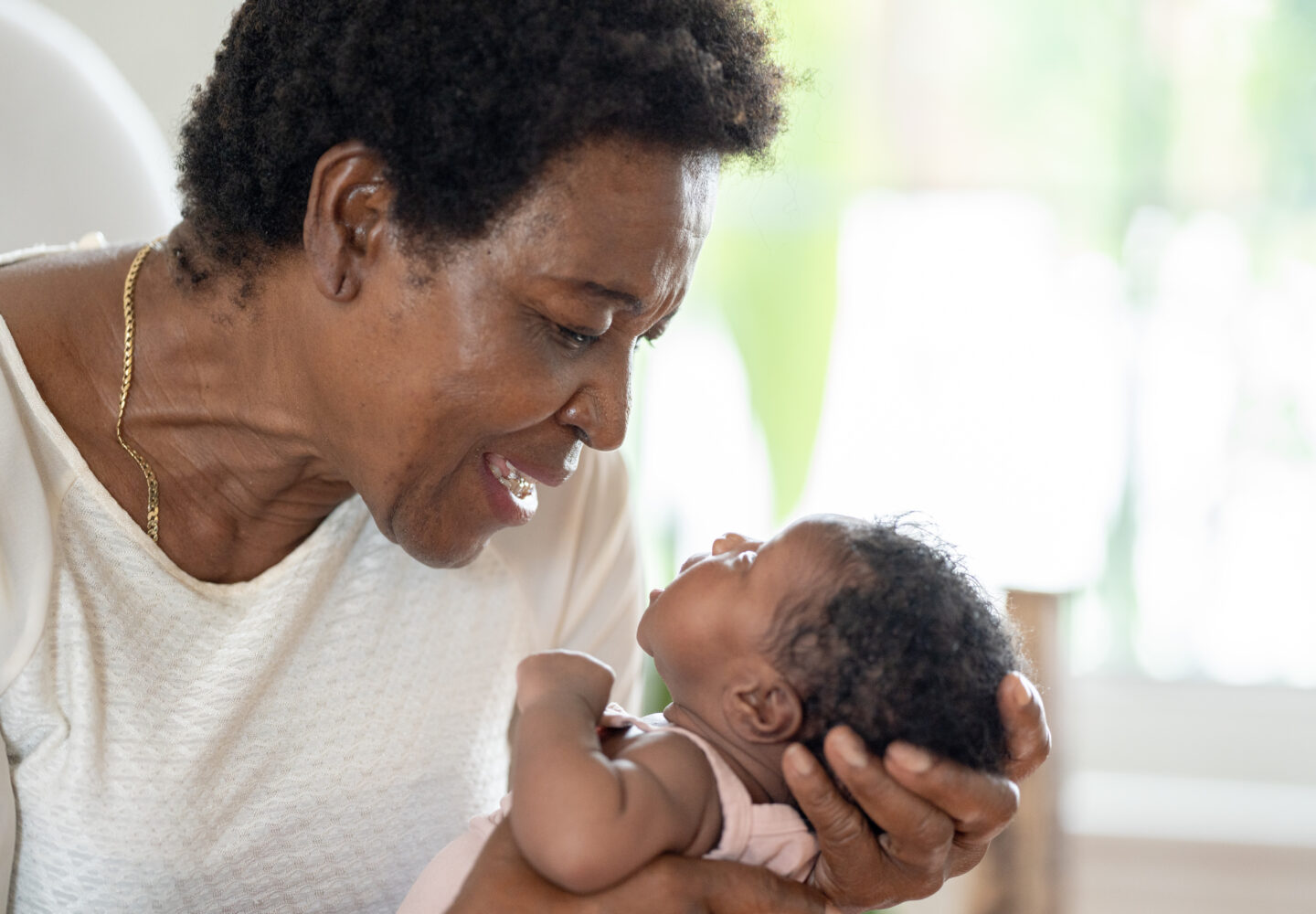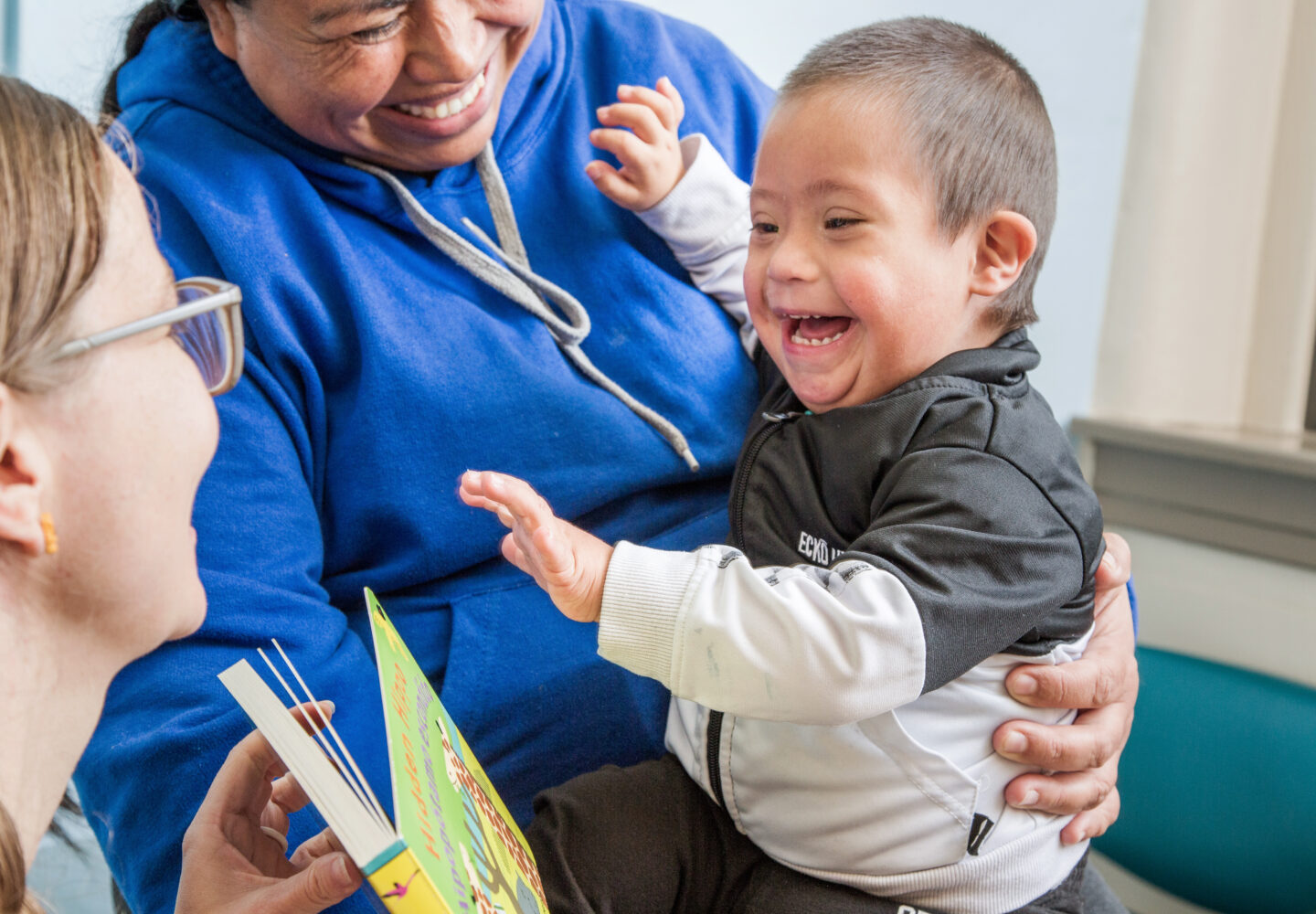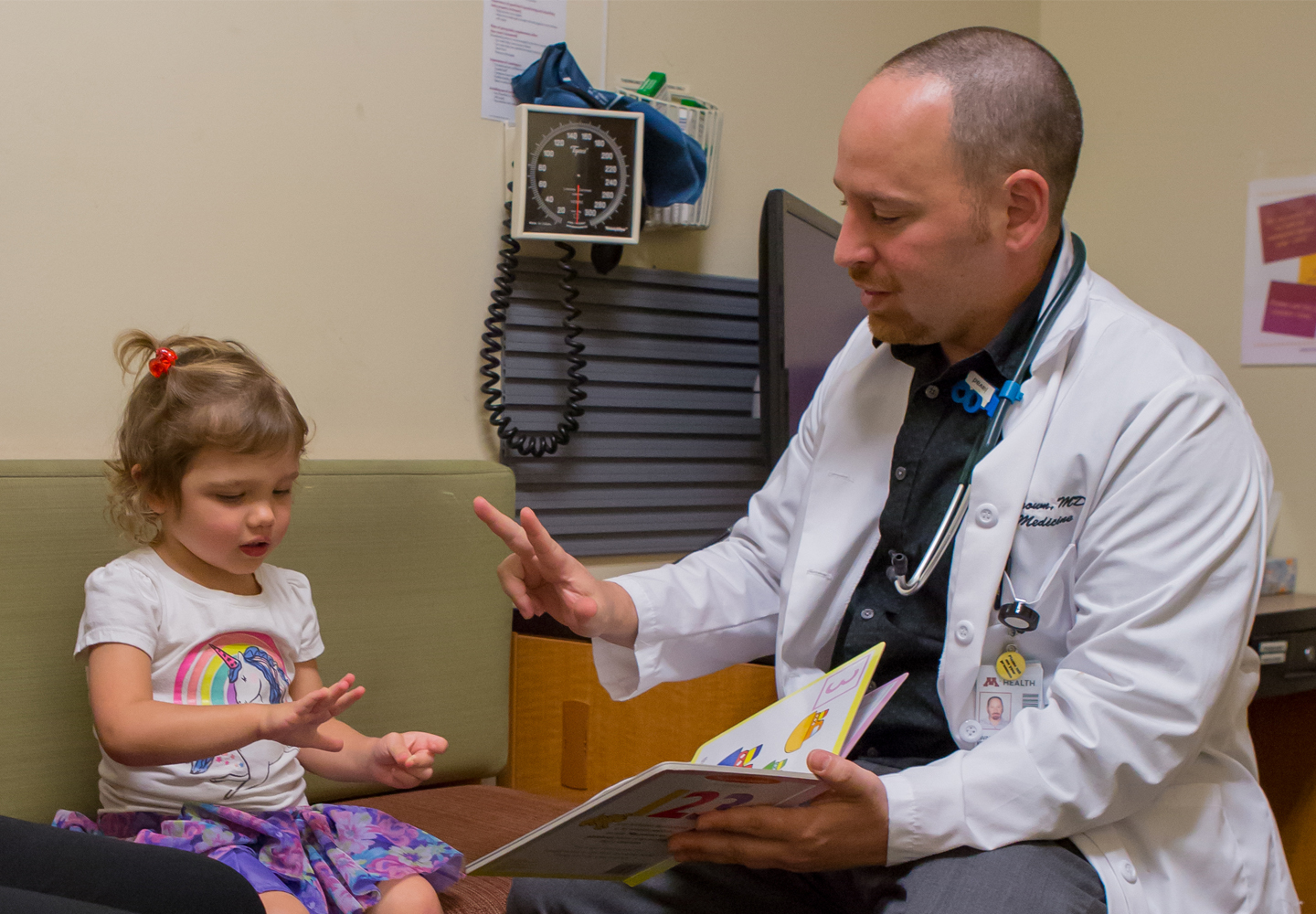At Reach Out and Read, we have always known that reading aloud together, telling stories, and sharing books help to forge a lasting, meaningful connection between caregiver and child. We have always encouraged families to make shared reading a part of their routine and celebrated the importance of spending time snuggled close together. More and more, the evidence is clear that we’ve had it right all along: This time is not just special and joyous — it’s life changing.
A growing body of evidence now indicates that routines around spending time together and reading aloud have lasting impact far beyond language and early literacy; they help foster emotional connectedness and healthy social-emotional development. Studies have shown that regular family routines like reading together even help to buffer the impact of Adverse Childhood Experiences on long-term health outcomes.
Based on this evidence, Reach Out and Read has updated our model to emphasize the importance of introducing talking, reading, and singing with babies right from birth. From 2023-2028, we will strategically roll out an adaptation of the Reach Out and Read model to include implementation in the first four well-child visits, in addition to the traditional 6-month to 5-year visits. To best equip sites and clinicians to adapt their current practice to the new model, we have developed Building Connections Begins at Birth training, which integrates concepts of early relational health into the newborn to 5-month visits.



